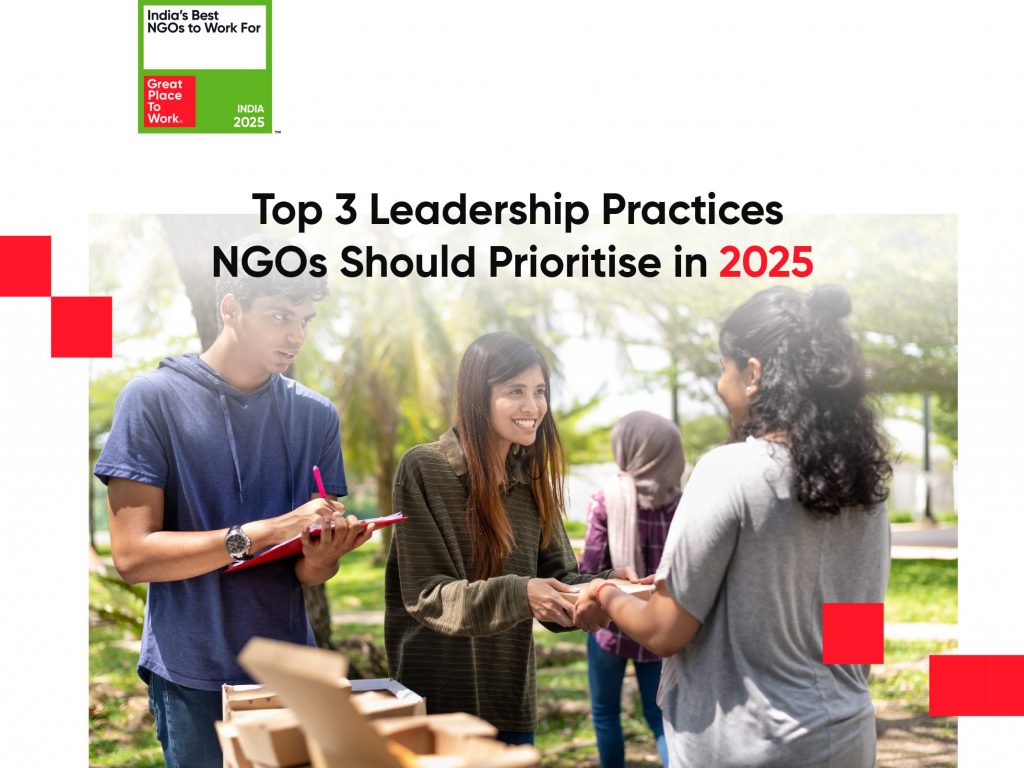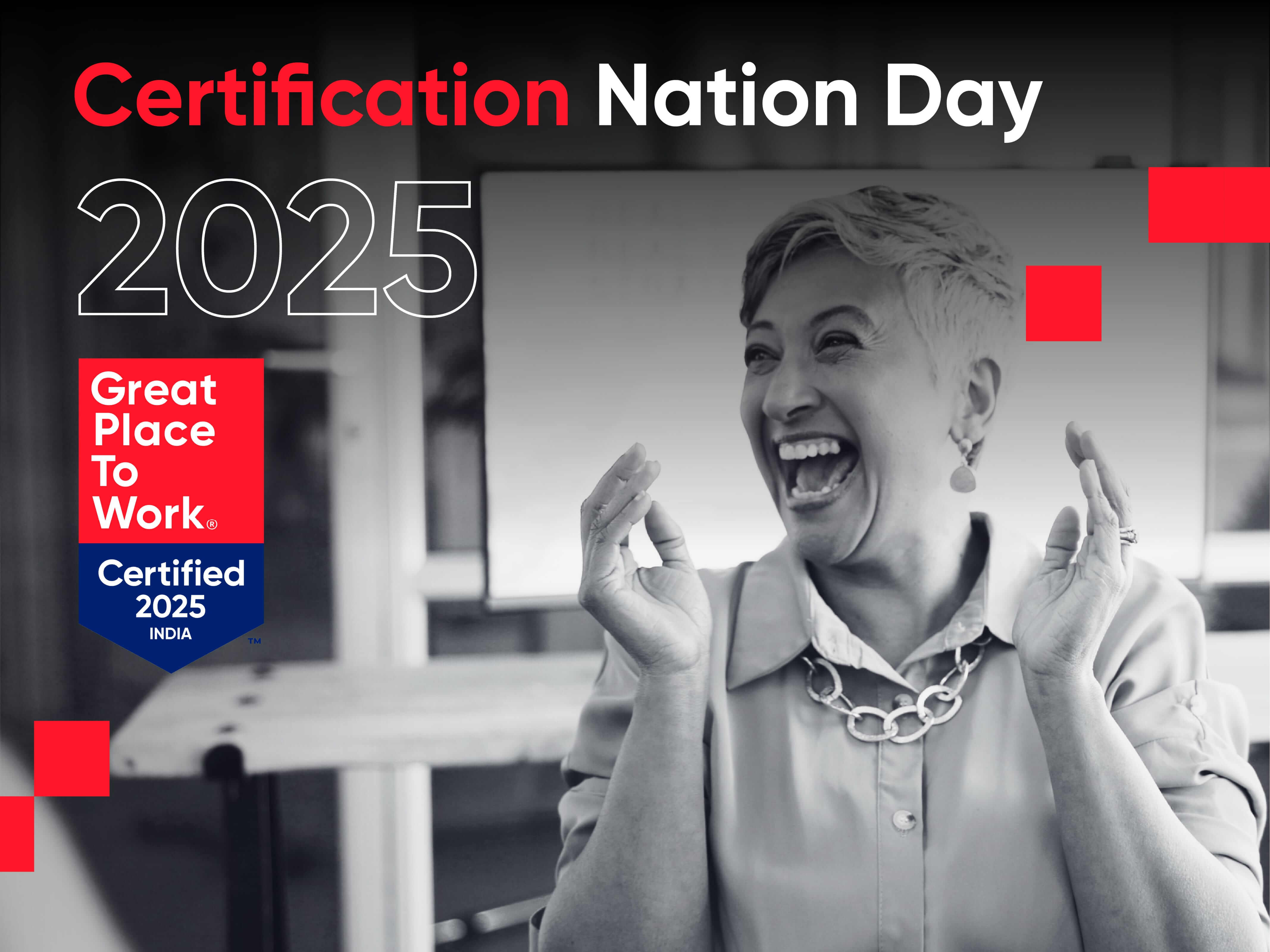Reading Time: 6 minutes
With over 3 million registered organisations serving more than 200 million people, the Indian NGO sector contributes approximately ₹3.56 lakh crore (around 2% of GDP) to the national economy. The industry is a powerhouse of social transformation, employing 2.7 million people and engaging 3.4 million full-time volunteers who work diligently to drive change in education, healthcare, environment, human rights, and social equity.
However, to be successful in today’s world, NGOs must focus on several key areas. They need to attract purpose-driven talent and demonstrate credibility and strong governance. Additionally, they must show innovation and agility in complex, resource-constrained environments. Emphasizing positive volunteer experiences has become crucial, as has advocating for justice and inclusion. NGOs should also create succession pipelines and demonstrate resilience during times of crisis.
Thus, NGOs, being a people-powered business, for a sustained, massive-scale impact on the economy, it’s fundamental for them to consistently create great workplace experiences.
What Sets the Best Workplaces Apart?
Workplaces that cultivate great cultures outperform the market and competition on nearly every business metric, regardless of size, industry, or geography. According to Great Place To Work® India’s Best NGOs To Work For 2025, the difference between the Best Workplaces™ and the Other Workplaces is significant. Best Workplaces outperform others in multiple dimensions, including productivity, recruitment, retention, customer service, and agility. The key differentiator behind this performance edge is leadership. The most critical factors influencing employees’ experience in an organisation are the leadership behaviours that ultimately decide whether employees experience high trust levels and contribute their best.
Top Three Leadership Practices NGOs Must Prioritize
Based on the learnings from Best Workplaces, below are the top three leadership practices that NGOs must prioritise to create great workplaces and achieve long-term impact.
- Focus on Fair remuneration and financial recognition
Fair compensation has long been a sensitive issue in the nonprofit sector. As NGO’s struggle with budget limitations while requiring high-quality talent, fair compensation remains an unresolved subject in the non-profit space. A study by CSIP at Ashoka University observed that NGO pay is 58% lower than general industry benchmarks. This gap not only reflects a financial challenge but also a cultural one. When employees consistently feel undervalued in monetary terms, morale drops, and turnover rises. However, a positive experience around it creates a powerful signal of value, trust, and fairness.
Great Place To Work India data reveals that in NGOs:
- 25% of employees feel their contributions are not recognised through shared financial benefits.
- 20% of employees report that their pay is unfair for the work they do.
- Fair compensation and the presence of shared financial benefits boost long-term retention by 28%.
- 80% of employees in Best Workplaces believe that they get a fair share of profits compared to 70% at other workplaces.
- 83% employees at Best Workplaces say they are paid fairly for their work, while only 74% feel the same in the Other Workplaces.
A lack of positive experiences around fair compensation in NGOs may translate into a risk of losing their most talented staff to other industries or international organisations that offer more competitive pay. More importantly, inequities in pay strain credibility both internally among employees and externally with stakeholders.
Sustainability in the nonprofit sector isn’t just about financial resources; it’s also about sustaining human capital. Failing to address compensation gaps undermines the long-term success of the mission of non-profit organisations.
Leadership To Dos:
Leaders in NGOs must rethink their approach to compensation by:
- Benchmarking salaries regularly against industry standards to stay competitive.
- Ensure pay structures or financial benefits recognise contributions made by an individual above and beyond the requirements.
- Implementing minimal yet symbolic gain-sharing mechanisms to ensure fairness. This can include recognition bonuses tied to the mission for staff welfare.
- Cascading a strong message aligned with financial benefits about “Your work is valued, and your contribution is essential to our mission.”
- Care for recognition and unique benefits
Recognition and benefits go hand in hand when it comes to motivation. Yet, many NGOs lag behind in building systems that reward contributions and offering benefits that align with the diverse needs of their employees.
While NGOs often match industry benchmarks for essential benefits, they often fall short in non-traditional perks, such as insurance. More critically, recognition is also experienced unevenly across gender, role, and generation.
Here’s what the Great Place To Work India data reveals:
- Best Workplaces report 84% employees feeling positive about special and unique benefits compared to 75% in other workplaces.
- Similarly, 86% of employees at Best Workplaces in NGOs report opportunities for special recognition compared to 78% at other workplaces.
- Women employees in NGOs report lower recognition (78%) compared to men (82%).
- Junior staff feel less recognised (79%) than senior managers (81%).
- Millennials and Gen Z employees experience fewer unique benefits (77%) than older generations (81%).
Recognition is not a one-size-fits-all exercise. For employees, especially those in mission-driven work, feeling seen and appreciated is as important as monetary compensation. When recognition is inconsistent, it amplifies disengagement.
Similarly, unique benefits are critical in a generationally diverse workforce. Although older employees may prioritise retirement benefits, younger employees may frequently seek and value mental health support, flexible working options, or wellness perks. Overlooking these differences turns away emerging talent pools that NGOs need.
Leadership To Dos:
To cultivate inclusivity and motivation among employees, leaders must:
- Design inclusive recognition programs that go beyond tenure and seniority, ensuring visibility for contributions across all levels.
- Audit parity around benefits to eliminate gaps across gender, role, or generational lines.
- Offer flexible, and relevant perks that resonate with different employee groups such as parental support for young families, learning allowances for Gen Z, or health coverage for all.
Quantification of recognition and benefits, though short-lived, serves a great purpose. When this is combined with employees feeling celebrated and supported in a workplace culture, they repay the company with sheer commitment and engagement.
- Living up to the promises
Workplaces in the NGO sector are an environment where missions are deeply tied to values, and trust in leadership is of paramount importance. Hence, failing to follow through on commitments may perhaps be the most adverse leadership misstep for the employees.

Yet, many NGOs lack robust mechanisms to observe the leadership trust levels. In fact, fewer than 40% of NGOs track leadership effectiveness according to the Stanford Social Innovation Review.
The results are clear:
- 18% of employees across the sector feel their management does not deliver on promises.
- At Best Workplaces, 88% of employees believe management delivers on promises, compared to 81% at the Others.
- Leadership confidence at Best Workplaces is 66%, but the Other Workplaces lag with a 9% lower rate.
In NGOs, where leaders often act as the face of the mission, the stakes are higher when it comes to credibility and governance. When employees lose trust in leadership, it cascades into lower morale, and weaker execution of programs. Consistent leadership, on the other hand, fosters a culture of credibility, alignment, and accountability, essential for organisations seeking to drive long-term social change.
Leadership To Dos:
NGO leaders must make delivering on promises a non-negotiable by:
- Setting clear expectations and aligning them with organisational goals.
- Implementing leadership reviews that regularly assess effectiveness and accountability.
- Communicating progress transparently, especially when challenges arise that may delay commitments.
In doing so, leaders strengthen the link between words and actions, a connection that employees seek when deciding whether to trust their organisation’s direction.
Why Leadership Confidence Matters?
Fixing leadership gaps isn’t just about building a better workplace culture alone; it directly translates into higher employee satisfaction and better business outcomes. Best Workplaces consistently report higher productivity, recruitment, customer service, and agility. They also report 4% higher retention when compared to others.
But perhaps the most significant statistic is employee confidence in leadership. At Best Workplaces, 66% of employees express a high deal of confidence in the leadership team’s judgment, compared to a 9% lower rate in other workplaces. This confidence fuels better execution, stronger teams, and greater impact. For NGOs, where missions depend on the collective strength of people, these outcomes are not optional; they are mission-critical.
Conclusion
NGOs exist to address some of society’s most pressing challenges, including poverty and inequality, climate change, and human rights. However, missions only guide directions; what truly builds great workplaces is the leadership actions. In 2025, NGOs must move beyond intentions to actions. By addressing the three critical leadership priorities of fair pay, recognition, and integrity, they can unlock trust, retain talent, and amplify their impact.
Thus, the future of India’s nonprofit sector depends on leaders who create workplaces where employees feel valued, recognised, and guided with integrity. When leaders prioritise these objectives, NGOs won’t just transform society externally; they will also cultivate great workplaces internally, where missions thrive because people thrive.









